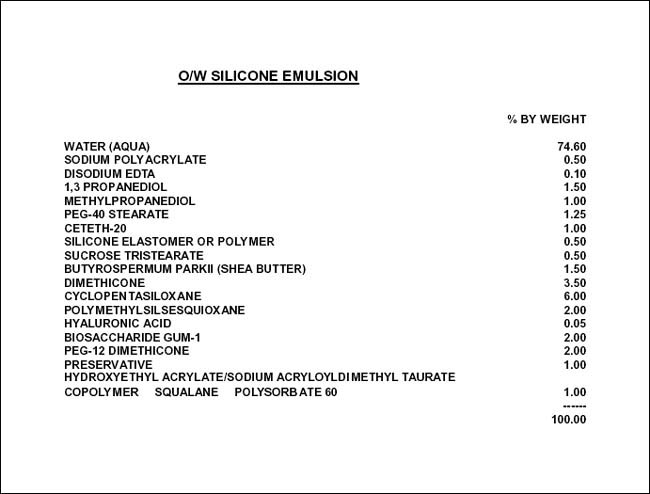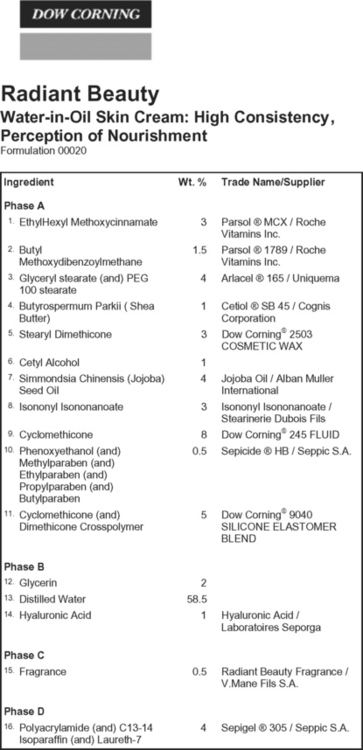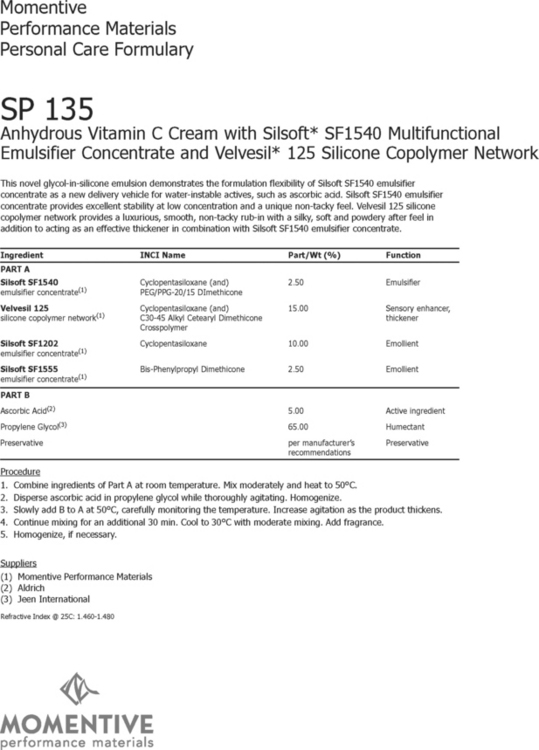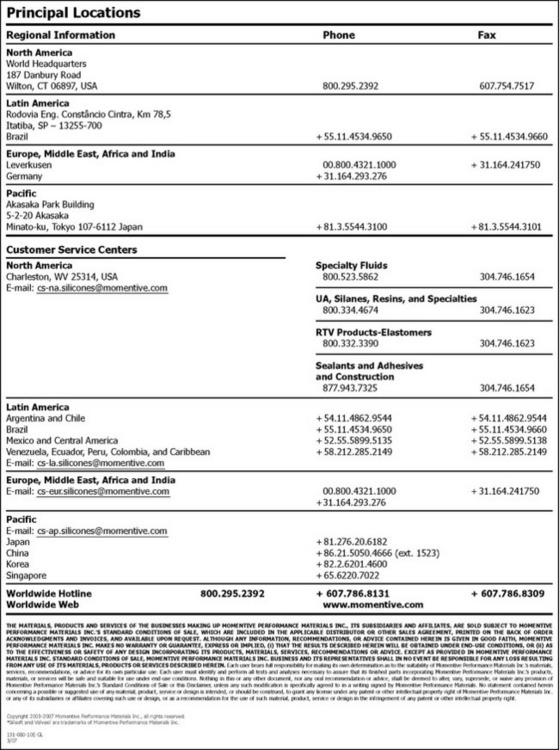Chapter 3 Cosmeceutical Formulation Considerations
VEHICLES
• Emulsions
OIL-IN-WATER EMULSIONS
The choice of ingredients now needs to consider the effect on performance as well as aesthetics. Figure 3.1 is an O/W emulsion in which the predominant components of the oil phase are a blend of silicones. This emulsion can be modified with the addition of bioactive ingredients—antioxidants and skin-soothing ingredients. The other aspect of this formulation that is worth noting is the use of an emulsion-stabilizing system that can be added at the end. This ingredient serves a dual function—adjusting viscosity and improving emulsion stability. Care must be taken, however, because these emulsion-stabilizing systems can also affect the feel of the product.
WATER-IN-OIL AND WATER-IN-SILICONE EMULSIONS
Water-in-oil (W/O) and water-in-silicone (W/S) emulsions, sometimes referred to as ‘inverse emulsions’, are formulations in which the internal or dispersed phase is a water phase, and the oil (or silicone) phase is the continuous or external phase. While still much less popular than O/W emulsions, recent advances in silicone-based emulsifier systems have caused an increase interest in these types of formulation. The formulation from Dow Corning (Fig. 3.2) demonstrates the use of these newer emulsifier systems. They have become increasingly useful when developing water-resistant sunscreen products and when looking to incorporate more lipophilic (oil-loving) functional materials into formulations that deliver skin care benefits such as barrier protection. The formulation of ‘inverse emulsions’ has been extended to where the internal phase is a hydrophilic polyol in place of water. The formulation from Momentive (Fig. 3.3) is an example of an ‘anhydrous’ emulsion which can be used as a delivery system for cosmeceutical ‘actives’ that have stability issues in water (i.e. ascorbic acid—vitamin C).










